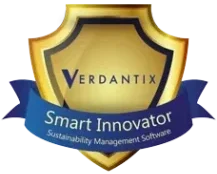Reporting on the GRI standards can help improve transparency and dialogue between companies and their stakeholders
The Global Reporting Initiative (GRI) is an independent, international organization headquartered in Amsterdam, the Netherlands that helps businesses and other organizations with widely used standards for sustainability reporting – the GRI Standards.
GRI’s standards are among the most widely used by companies globally, with a 2022 report finding that 78% of the largest 250 global companies used the GRI reporting framework. GRI standards address many areas of environmental, social, and governance (ESG), including not only greenhouse gas (GHG) emissions but also biodiversity, health and safety, and waste, among other topics. GRI adopts a model of double materiality, meaning that they maintain a company should consider an ESG issue to be material to their business if it has financial impact on the company, or if it has external impacts on communities, stakeholders, or the environment, because these two categories intertwine.
While GRI standards are not regulatory requirements in themselves, GRI has played a significant role in working with other standards-setting bodies. For example, GRI worked closely with the European Financial Reporting Advisory Group (EFRAG) during the development of EFRAG’s first ESG standards, which mandate disclosures for 50,000 EU companies, and GRI’s wide focus on different aspects of ESG and double materiality perspective is reflected in EFRAG’s standards. Additionally, because GRI standards are so widely used, stakeholders increasingly expect businesses to understand and follow the standards.

What are some key takeaways on GRI standards?
GRI has important aspects in common with other ESG disclosure frameworks. GRI standards cover many areas of ESG, and that’s important to know. But at the same time, it’s important to know that GRI standards have many points in common with other disclosure frameworks. All ESG frameworks highlight the importance of visibility and management of climate risks and opportunities, and identification and tracking of your GHG emissions inventory.
ESG disclosures come down to good data. Businesses hoping to establish and maintain ESG maturity need to start tracking their most important ESG metrics. Of course, the challenge is many companies don’t have efficient processes for capturing and tracking data on all three scopes of GHG emissions, particularly Scope 3 sources, like waste treatment facilities which are not under the organization’s direct control, or the utility data they need for determining Scope 2 emissions. That’s where effective ESG software like ours can help. The ESG Solution from VelocityEHS makes it easy to track and report all your GHGs, and our unique Utility Data Sync capability interfaces directly with your utility provider to collect your data and apply correct emission factors and unit conversions.
The VelocityEHS ESG Solution Supports the GRI Standards
GHG & Energy Management
VelocityEHS GHG & Energy Management automates and simplifies the collection, validation and reporting of your greenhouse gas and energy data. Easily manage shifting climate policies as well as investor and supply-chain partner requirements.
Materiality Assessment
Success in ESG starts with a comprehensive materiality assessments. Identify risks, ensure transparency, and align with your global supply chains.
Performance Metrics
Set strategic goals for long-term ESG success. Performance Metrics allows you to better track and manage progress toward your ESG goals, and to amend your ESG strategy based on real-time data.
Green Chemistry
Start your product stewardship journey by taking control of the chemical ingredients in your profile and reducing the impacts and harm your product may have on the environment and people.
GHG & Energy Management
VelocityEHS GHG & Energy Management automates and simplifies the collection, validation and reporting of your greenhouse gas and energy data. Easily manage shifting climate policies as well as investor and supply-chain partner requirements.
Materiality Assessment
Success in ESG starts with a comprehensive materiality assessments. Identify risks, ensure transparency, and align with your global supply chains.
Performance Metrics
Set strategic goals for long-term ESG success. Performance Metrics allows you to better track and manage progress toward your ESG goals, and to amend your ESG strategy based on real-time data.
Green Chemistry
Start your product stewardship journey by taking control of the chemical ingredients in your profile and reducing the impacts and harm your product may have on the environment and people.
Get the Help You Need for GRI Reporting!
You shouldn’t feel overwhelmed by ESG disclosure requirements when you have the right tools. Schedule a demo with our experts today to learn more about how you can simplify your reporting and build and sustain ESG maturity with VelocityEHS.
Partner with the most trusted name in the industry
Stress less and achieve more with VelocityEHS at your side. Our products and services are among the most recognized by industry associations and professionals for overall excellence and ease of use.




